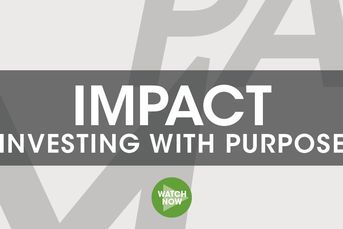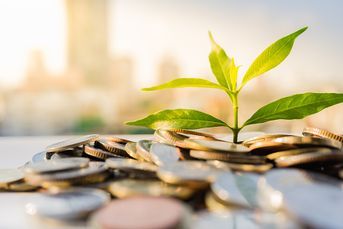Gross worst as volatility spikes in Pimco fund
Bill Gross is taking investors in his $232 billion Pimco Total Return Fund for a rough ride.
Bill Gross is taking investors in his $232 billion Pimco Total Return Fund for a rough ride.
The world’s largest bond fund produced the worst risk-adjusted return over the past year among 16 U.S. intermediate-term funds with at least $5 billion in assets, according to the Bloomberg Riskless Return Ranking. As shorter-term debt tumbled in anticipation of rising interest rates, Mr. Gross’s fund posted the second-worst returns and second-highest volatility in the group. The Pimco Income Fund, run by Daniel Ivascyn, had the second-best performance with the third-lowest price swings.
Volatility has increased in the Pimco Total Return Fund for each of the past three years, reducing risk-adjusted gains for investors in the fund. In the past year, the price swings have come with declining returns as Pacific Investment Management Co.’s co-founder Mr. Gross misjudged the timing and impact of the Federal Reserve’s plan to reduce stimulus. Mr. Gross has been betting on five-year Treasuries, a wager that went bad as the yield on such debt more than doubled since May.
“The fund has always had volatility,” said Todd Rosenbluth, director of mutual-fund research for S&P Capital IQ. “It’s just that investors used to get rewarded for it and now they’re not.”
(More: Gross’ new heir apparent post-El-Erian)
PRICE SWINGS
Pimco Total Return Fund declined 1.2% in the 12-month period ended March 31, trailing 88% of similarly managed funds, according to data compiled by Bloomberg. The fund’s volatility was 4.3, compared with the 3.6 average for the group. Over the past five years, Pimco Total Return’s risk-adjusted return ranked 10th out of the 15 funds that have been in existence since then.
“We have a complete suite of products with different objectives and risk tolerances,” Mark Porterfield, a spokesman for Pimco, wrote in an e-mail. “It’s important to compare a fund’s performance with its benchmark and not just with other mutual funds, which could hold riskier and higher-yielding assets. Total Return has outperformed its index for the past six months, two, five and 10 years.”
(See also: Pimco chases BlackRock in ETFs as money returns to bonds)
Higher price swings mean the price of an asset can move dramatically in a short period of time, increasing the potential of unexpected losses compared with a stable-priced security. Bloomberg’s risk-adjusted return is calculated by dividing total return by volatility, or the degree of daily price-swing variation, giving a measure of income per unit risk. The returns aren’t annualized.
BERNANKE, YELLEN
Former Fed Chairman Ben S. Bernanke’s suggestion last May that he might scale back the central bank’s bond-buying program caused a sell-off in Pimco Total Return’s holdings of intermediate-term U.S. Treasuries and inflation-linked bonds. Last month, Fed Chairman Janet Yellen signaled that rates could climb sooner and faster than previously forecast, triggering losses in short-term bonds, the heart of Gross’ portfolio.
Pimco Total Return had 79% of its portfolio in bonds with maturities of five years or less as of Feb. 28, according to the firm’s website. The fund had a short position in bonds with maturities of 20 years or more, which means it was counting on those securities to decline.
Bonds lose value as rates rise. The yield on five-year Treasuries, an investment Gross had recommended in January 2013, rose to 1.73% as of March 31, from 0.82% May 21, the day before Bernanke spoke. Mr. Gross’s fund had its biggest loss since 1994 in 2013 after being caught off-guard by the Fed’s signals.
“Gross isn’t shy about taking risk,” said Jeff Tjornehoj, an analyst at Lipper Inc. “When you’re right you can be very right, but he’s had moments lately where his anticipation of the market was off.”
Over longer stretches, Mr. Gross has done better. Pimco Total Return had a higher absolute return than at least 95% of rivals over the last 10 and 15 years, according to data from Morningstar Inc.
“Bill Gross has done an exceptional job over the long term, and in my view, he will continue to do well compared to the benchmark,” said Joshua Emanuel, chief investment officer of Elements Financial Group, where he oversees $450 million. Mr. Gross’s fund is typically measured against the Barclays U.S. Aggregate Bond Index.
Mr. Gross, 69, who co-founded Pimco in 1971, has faced other challenges this year. In January his heir apparent, Mohamed El- Erian, unexpectedly announced his resignation as chief executive. His departure was followed by reports of tension between the two. Mr. Gross lashed out at El-Erian in a June meeting as performance stumbled and withdrawals continued, two people familiar with the matter said this year.
(See also: Advisers ratchet up scrutiny of Pimco)
RECORD REDEMPTIONS
Pimco Total Return suffered record redemptions of $41.1 billion last year, based on data from Morningstar. Clients pulled an estimated net $3.1 billion from the fund in March, Morningstar’s data show. That’s even as investors put $11.6 billion into bond funds last month through March 19, according to estimates from Investment Company Institute.
The redemptions don’t include institutional accounts. Pimco’s assets under management declined to $1.91 trillion as of Dec. 31, down from a peak of $2.04 trillion last March.
The $9 billion Lord Abbett Bond-Debenture Fund had the best risk-adjusted return of 2% in the 12 months through March 31, combining the highest total return with above-average volatility. Mr. Ivascyn’s $33 billion Pimco Income Fund gained 1.5%, with the second-highest return along with modest volatility.
He was named one of Pimco’s deputy chief investment officers in January following Mr. El-Erian’s decision to leave. He and his co-manager on Pimco Income, Alfred T. Murata, were named fixed-income managers of the year for 2013 by Morningstar. The fund, which has outperformed 98 percent of rivals over the past five years, has benefited from its exposure to mortgage-backed securities, a bet on the recovery of the U.S. housing market.
Steven Roge, an investor in both Pimco Income and Pimco Total Return, said the two funds aren’t comparable. He described Pimco Income as a go-anywhere fund that specializes in bottom-up research. Gross’s fund, by contrast, is a more traditional bond fund that cannot stray too far from its benchmark.
“They are two different beasts,” said Mr. Roge, a money manager at R.W. Roge & Co, where he helps oversee $225 million.
In its December “Strategy Spotlight,” Pimco wrote that the Fed’s plans to keep interest rates low were more important than its decision to taper its bond purchases, and as such, Pimco’s funds would concentrate on short-term debt while pulling back from longer-dated securities.
FED’S SURPRISE
Ms. Yellen said last month that the central bank’s key interest rate might rise by the middle of next year. At the same time, Fed officials predicted their target rate will be 1 percent at the end of 2015 and 2.25 percent a year later, higher than previously forecast, as they boosted projections for gains in the labor market.
The surprise announcement triggered a selloff in the one- to five-year bonds Mr. Gross holds, prompting his fund to trail 73 percent of peers after posting a 1.3% return in the three-month period ended March 31. For the first quarter, U.S. Treasuries of 20 or more years in maturity gained 7.6%, according to a Bank of America Merrill Lynch index.
“What happened in the first quarter was just the opposite of what the market had been expecting,” said Kenneth Taubes, chief investment officer at Boston-based Pioneer Investment Management Inc.
Mr. Taubes, who anticipated that short-term rates would rise as the economy strengthened, positioned his portfolio in a way that took advantage of shifts along the yield curve. His $1.6 billion Pioneer Bond Fund gained 2.6% this year, better than 82% of peers, according to data compiled by Bloomberg.
Mr. Gross has said on a number of occasions this year that investors are misreading the Fed, focusing too much on the improving economy and paying too little attention to the lack of inflation in the U.S. In the absence of inflation, the central bank will be in no rush to increase rates, Mr. Gross has said.
After the Commerce Department reported March 28 that core prices rose 1.1% in February over the previous year, Mr. Gross used Twitter.com to say: “Most important number of the month. Market doesn’t notice. Pimco does. Dovish Fed.”
No matter how Mr. Gross’s call on rates and the Fed turns out, investors need to keep his short-term troubles in perspective, said Eric Jacobson, a senior analyst with Morningstar, which has maintained its “gold” rating on Pimco Total Return Fund.
“If you look back on the history of this fund there have been periods when it did poorly for a time,” he said. “I don’t see anything in the past year that would make me question what is going on.”
(Bloomberg News)
Learn more about reprints and licensing for this article.







